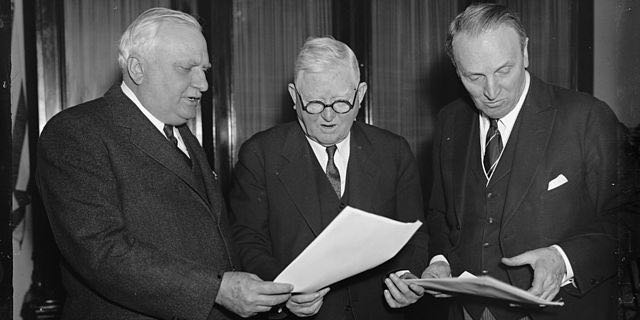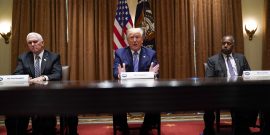The American judiciary is too politicized, but this cannot be fixed with a revolving jumble of judges.
Revisiting the Logic of Court Packing
Court packing has been much in the news of late. In the 2020 presidential election, candidates like Elizabeth Warren openly favored adding justices to the current Supreme Court. Early in his administration, President Biden established a commission on Supreme Court reform, and one of the proposals it analyzed at length was a statute to expand the size of the Supreme Court.
While such a proposal has no chance of becoming law in the next Congress with a Republican House, the idea of court packing will not die any time soon. Not since the New Deal has the Democratic Party so fundamentally and openly opposed the jurisprudence of the Supreme Court. The Court has a majority of originalists. The progressives that have come to dominate the Democratic Party find that judicial philosophy radically incompatible with their own, both because the Constitution’s original checks and balances impede the radical change that progressivism favors, and because the rights that the Constitution enumerates have only a modest overlap with the rights that progressives celebrate.
Given that the dynamics of our politics will continue to make court packing salient, Laura Kalman’s FDR’s Gambit: The Court Packing Fight and the Rise of Legal Liberalism is superbly timed. It is the best history ever of the previous attempt at court packing—the one that President Roosevelt initiated in 1938 after the Supreme Court invalidated several of the New Deal’s key legislative initiatives. It combines an acute analytic command of the Old Court’s jurisprudence with an understanding of the turbulent politics of the time.
Motivation for Court Packing
Kalman usefully shows that what motivated FDR and gave him a political opening for his audacious effort was the Court’s striking down of state as well as federal legislation. Famously, in Schechter Poultry v. United States, the Supreme Court invalidated the federal National Industrial Recovery Act. That legislation provided the authority to set prices over the entire nation to an agency advised by producers and workers, but the Court held that it delegated too much power, with too few standards, to the executive branch. While that decision was unanimous, a closely divided Court in Carter v. Carter Coal Co. then invalidated wage and hour regulations of large industrial companies on the ground that Congress lacked the power under the Commerce Clause to regulate manufacturing.
The Court then followed up these decisions limiting federal authority with a decision limiting state authority. In Morehead v. New York ex rel Tipaldo, the Court relied on Lochner-era jurisprudence to say that the Due Process Clause restricted the ability of a state to engage in what that previous era had understood to be class legislation—statutes that tried to benefit workers not to protect health and safety but instead to redistribute resources.
FDR seized on the combination of these two lines of cases to argue that the Supreme Court was creating a “no man’s land” where neither the state nor federal government could engage in needed regulation. Buoyed by his smashing victory in the 1936 presidential election and the huge Democratic congressional majorities elected on his coattails, he unveiled the Judicial Procedures Reform Bill of 1937. It would have granted him the right to appoint a new justice whenever a justice was over seventy-five and failed to retire. As there were six justices over seventy, Roosevelt could then transform the Court.
Today the ABA has moved far to the left: as the Anglican Church was the Tory Party at prayer, today the ABA is the Democratic Party at the Bar.
Roosevelt disingenuously justified the bill as an effort to make the Court more efficient by giving it more personnel. This rationale was seen as pretext even before Chief Justice Hughes wrote a letter pointing out that a much larger court would be less efficient because deliberation would take longer. Kalman nicely shows that the President quickly shifted ground and made clear that he wanted justices to adopt a method of constitutional interpretation that would allow the Constitution to change with the times. Colorfully, for instance, the President said that when it was enacted the Constitution resembled the USS Constitution, commissioned in 1794, capable of “wondrous battlefield victories.” But unless transformed by interpretation, it would be as feeble as a “tugboat” because “what has happened and had been learned in the meantime” had “entirely superseded it.”
Thus, court packing was a political battle about judicial method. Many Senators in opposition to court packing signaled that they shared FDR’s policy objectives but opposed his view of a living Constitution open to judicial transformation. They proposed as alternatives amendments, including substantive amendments, expanding the federal government’s powers, as well as procedural amendments requiring a supermajority of justices to invalidate legislation. But FDR, like progressives after him, was a man in a hurry who dismissed the amendment process as too laborious and slow. That stance itself drew a riposte from the President of the American Bar Association: “The new concept seems to be that it would be useless labor to amend the Constitution in the method provided in the Constitution. Why amend when by the adoption of new interpretations, the same end can be accomplished?”
Kalman’s Thesis
Kalman’s thesis, which goes against the weight of historical memory, if not the scholarly consensus, is that FDR’s gambit was successful in achieving his objective. While the Senate ultimately defeated the legislation by a large margin, there were many months of uncertainty in the interim that encouraged the Court to change course. And indeed, the Court did effectively overrule both Carter Coal and Tipaldo during the pendency of the court-packing bill with both Chief Justice Charles Evans Hughes and Justice Owen Roberts shifting positions in the former case and Roberts in the latter case. Roberts’ change of heart has been dubbed “the switch in time that saved nine.” Kalman presents a wonderful cartoon that shows Roberts as a trapeze artist swinging the Court back and forth. This depiction is one of the scores of delightful cartoons with which Kalman enlivens many an argument that lay people might otherwise find dull.
But other scholars—so-called internalists—have argued that the positions of Hughes and Roberts made coherent doctrinal and procedural sense and were not determined by political concerns. For instance, in Tipaldo, no litigant had asked for the overruling of controlling Lochner-era precedent. But in 1937, the defenders of minimum wage legislation did.
In an era when eighty-five is the new seventy, justices are not likely to retire to give a president more seats.
In my view, Roberts and Hughes had proved themselves more sympathetic to a flexible, non-originalist interpretation before 1937. In 1934, they ruled in Home Building and Loan Association v. Blaisdell that legislation that prohibited lenders from foreclosing on their mortgages according to the terms of their contract did not violate the Contract Clause, even though the Clause flatly prohibits the “impairment” of contracts. Chief Justice Hughes’ majority opinion justified the state’s choice to abrogate contracts with an appeal to living constitutionalism, more cautious and less piquant than Roosevelt’s but not fundamentally different:
It is no answer to say that this public need was not apprehended a century ago, or to insist that what the provision of the Constitution meant to the vision of that day it must mean to the vision of our time. If, by the statement that what the Constitution meant at the time of its adoption it means today, it is intended to say that the great clauses of the Constitution must be confined to the interpretation which the framers, with the conditions and outlook of their time, would have placed upon them, the statement carries its own refutation.
Roosevelt’s legislation may have pushed Hughes and Roberts to apply this philosophy more broadly to the Constitution. But a form of living constitutionalism already appealed to swing justices on the Court.
But Kalman is almost surely right that the prospect of court packing accelerated the retirement of Justice Willis Van Devanter, allowing the President to gain greater ideological control of the Court more quickly by appointing Hugo Black. Understanding now, as we do, that FDR would go on to appoint seven more justices, the Court’s doctrine would have been revised anyway, but of course, that was not known when he introduced the legislation. Time is the great devourer of jurisprudence, as of all things.
Court Packing Then and Now
Though Kalman’s presentation of court packing’s past is superb, it cannot predict with any certainty court packing’s future. But comparing the factors that led to its defeat in 1937 raises the possibility that court packing today may well be a live possibility should the Democratic Party gain the Presidency in 2024 with substantial majorities in the House and Senate. Many of the factors that led to Roosevelt’s defeat are no longer present.
First, the legal establishment is not as firmly against court packing as it was back then. As indicated by the quotation from its President, the ABA then was a conservative organization committed to legal formalism that denounced court packing with its members in opposition by a margin of 6-1. But today the ABA has moved far to the left: as the Anglican Church was once the Tory Party at prayer, today the ABA is the Democratic Party at the Bar. The legal establishment will be at best split about court packing.
Second, as Kalman shows, members of the Democratic Party in the House and Senate were responsible for defeating the plan. The Republican minority also opposed it but mostly kept a strategic silence. FDR could not count on uniform party support, because his party was less ideologically unified than today. Southern Democrats were conservative and many of them were worried that FDR would appoint justices willing to enforce the Constitution’s guarantees of racial equality. Today the Democratic Party has far greater ideological cohesion, particularly on the cultural issues that may motivate court packing. Moreover, most Senate Democrats want to eliminate the filibuster, and that would make court packing much easier to achieve without any Republican support.
Third, the Court under Chief Justice John Roberts is less likely to bend than the Court under Chief Justice Hughes. That is partly the result of its relative youth. In an era when eighty-five is the new seventy, justices are not likely to retire to give a Democratic president more seats. And a majority of the justices have shown no interest in the kind of living constitutionalism that facilitated the swerves on the Hughes Court, relieving some of the political pressure for passage of Roosevelt’s plan.
Kalman’s book may itself contribute at the margin to making court packing more likely. Whether or not court packing helped change the Court’s key doctrines, she does show that given FDR’s objectives it was not a foolish fiasco. It was instead a deadly serious effort to make living constitutionalism an effective substitute for the original Constitution—an objective that FDR’s progressive successors continue to pursue.


